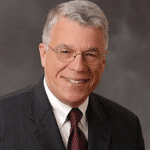Pittsfield Rethinks Adult Roles
CompetencyWorks Blog
(This is the third part of a series on Pittsfield: See Part 1, Part 2 and Part 4.)
One of the big questions that we have barely begun to tackle is how do districts have to be transformed within a personalized, competency-based environment?

In preparing to transform the Pittsfield Middle and High School to a personalized, competency-based school, Pittsfield School District established a five-part logic model that included “redefine adult roles”. (Read more about Pittsfield’s competency education infrastructure, personalized approaches, and implementation insights.)
Organizational Changes: Superintendent John Freeman explained that they needed a flatter or more distributed organizational management structure. Even in a small district, silos existed, with the elementary schools and Pittsfield Middle and High School operating very independently. More people are reporting to him now, allowing him to ensure that the core values are at the heart of implementation decisions.
In looking at the job requirements of the principal, PSD confronted one of the issues we all know to be true – the job of principal requires an enormous set of expertise and skills. The instructional knowledge and skills are distinctly different from those of operating a facility. So PSD has replaced the principal positions with two deans – the Dean of Instruction and the Dean of Operations. In addition, they created the position of Director of College and Career Readiness (DCCR) to direct more attention to the preparation and transition of students for graduation. The ELO coordinator and counselors report to the DCCR
Using Data: Data is used increasingly to help guide decisions at PSD, building upon the work of Paul Bambrick-Santoyo. Given that PowerSchool has yet to make the necessary changes for a personalized, competency-based district to monitor student progress, there is a limit on how much real-time data can be used to help PSD improve their services. PSD’s small size is an advantage, however, as teachers can identify students who are struggling or not making adequate progress and engage the students other teachers as needed.
Revisiting Job Descriptions: With the support of William Bryan, PSD began a process of revisiting jobs. In an inclusive process, they agreed upon the purpose of the position, success measures, critical interdependencies, contact priorities, and a position description that includes basic and advanced knowledge, skills and talents, and performance measures. Here are some of the expectations of a PMHS teacher:
Purpose: 1) Facilitate ownership of learning for all students; 2) Provide opportunities, experiences, and instruction that enable all students to achieve and attain their goals in a student-centered learning environment 3) Expose students to multiple learning opportunities and encourage perseverance in challenging tasks; 4) Accommodate students with physical and/or emotional disabilities and provide access to materials and instruction needed to achieve their goals; 5) Establish and maintain a positive, cooperative and genuine relationship with students; 6) Foster development of 21st-century skills of collaboration, communication, creativity, and critical thinking for all students; 7) Model enthusiasm for learning; 8)Maintain a safe and comfortable classroom environment for learning; 9) Model responsibility and respect for others in the school environment; 10) Confer and collaborate with parents and other teaching staff to foster student academic and/or social/emotional growth; 11) Assist in the professional growth of colleagues; and 12) Keep accurate records that meet district and state guidelines.
Basic Knowledge Skills and Talents: Assessment; collaboration; communication; curriculum; instruction; listening; management of classroom environment; problem-solving; team player; technical expertise; and technology savvy.
Advanced Knowledge Skills and Talents: Accurate empathy; adaptability; desire for self-improvement; motivating/influencing; professionalism; results-driven; and student-centered.
Success Measures: 1) Progress in student proficiency in math and reading and writing show as measured by summative assessments (NECAP/NWEA); 2) Evaluated as 3 or 4 on Pittsfield’s Professional Growth and Evaluation rubrics 3) Student mastery of competencies within the expected time frame; 4) Employment of student-centered instructional practices; 5) Students receive timely and appropriate interventions; 6) Success of student interventions; and 7) Reduction in the number of disciplinary measures and behavior referrals.
PSD also is revising the jobs evaluations, partnering with the union to develop a teacher effectiveness model that is valued by teachers and administration alike.
Going Forward: Freeman says it’s not enough to think about redefining adult roles. “We know that the participation of students and parents needs to be nurtured,” he said. “We are continuing to look for other options to engage students and expand their role in the school.”